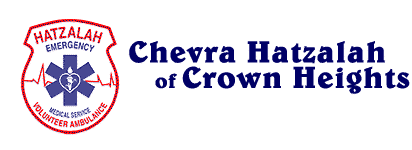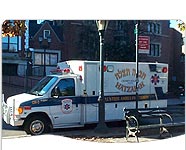





Prehospital Incident Profile
Presentation On arrival you find a 10-month-old infant, actively wheezing. The child's heartbeat is strong, and he seems alert. He doesn't present with a fever. All other sections of the physical exam fall within normal limits. The parents tell you the baby woke up wheezing, and they called you right away. They report their son has no history of asthma or anything else and takes no medications. Your partner places a pediatric non-rebreather on the patient, and you prepare an albuterol inhaler. You move the child to the ambulance and prepare for the 25-minute ride to the hospital. The patient's wheezes improve only slightly after the first trial of the medication. Your protocol allows you to treat a pediatric patient with wheezing refractory to the albuterol with a subcutaneous injection of epinephrine. You administer the epinephrine, but observe no improvement in the patient's condition. You try to dial medical control on the cell phone and realize the battery is dead. Puzzled by the patient's non-responsiveness to the drugs, you decide to continue oxygen and expedite your transport to the hospital. The rest of the ride proves uneventful, and you present the patient to the ED staff.
Discussion The doctor tells you that bronchiolitis results from a respiratory synctal virus (RSV) infection of the lower airways, usually occurring in the winter or spring in children younger than 18 months old. Symptoms include inflammation of the distal airways with wheezing that's frequently unresponsive to medication aimed at relieving bronchospasm. This condition is usually self-limiting but can progress to life-threatening hypoxemia. The younger the patient, the higher the risk of respiratory failure. This is due to the small bronchiole diameter of younger infants. The preferred prehospital treatment is ventilatory support with humidified oxygen and rapid transport. Although usually ineffective at completely reversing the bronchospasm, nebulized medications (albuterol or metaproterenol) may afford some relief. Once again the streets give up another secret to you. All that wheezes is not asthma. You decide whoever coined that phrase was pretty wise.
About the Author
|
Home - About Us - Courses - Donate - Members - Safety Tips - Medical Digest
What is an Emergency? - Contact Us - Member Login - News - Photo Album
© Copyright 2003 - 2004 Hatzalah of Crown Heights
Design by Unique Image Advertising